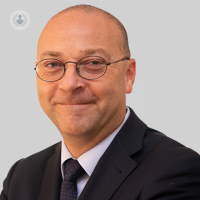Hyperthermia, a complementary treatment for cancer
Written by:The Oncological Hyperthermia is a technique that can be applied in various medical specialties such as neurosurgery , which acts as an adjuvant to traditional cancer treatments, achieving results increase survival and quality of life of cancer patients. This treatment, existing as a therapeutic alternative for several decades, is recognized by much of the scientific community.

Indications for hyperthermia
Hyperthermia can be used in various specialties, as it is specifically indicated for malignant tumors in any stage and functions as complementary to surgery, chemotherapy and radiotherapy, enhancing their effects.
Thus, oncologic hyperthermia is considered the "fourth pillar" of oncology. When applied before radiotherapy, you can sensitize tissues to optimize their performance and their effects when applied after chemotherapy, power.
The application as monotherapy in patients who do not want to be treated with conventional therapies is yielding excellent results. However, today, instead of offering only hyperthermia treatment, it tends to suggest a combined therapy using all the resources at our disposal.
Types of hyperthermia
There are two types of treatments with hyperthermia: Local hyperthermia and deep hyperthermia. Local hyperthermia is the pioneer and developed several decades ago. It is to slightly increase the temperature of the area, but is not sufficiently effective, since it fails to maintain this temperature in deeper areas to treat the disease properly. Currently they used in some cases of superficial pathologies, but not treat deep tumors.
Moreover, the deep hyperthermia is capable of accurately anywhere in the body by novel devices which permit sustained application of a field of high temperature, both surface planes as deep respecting normal tissue and enabling the selective destruction cancerous tissue.
Scientists around the world are working to develop new lines of research in the medical field application of hyperthermic in neurological injuries, musculoskeletal and some types of chronic degenerative lesions and autoimmune pathologies background, among other promising applications. Publications in this regard appear in very early date to illustrate these exciting areas of cutting-edge research.
Hyperthermia: how it applies
The technique involves selectively provide a thermal field focusing on the area where the malignant tumor is. This application is totally painless, safe and has no side effects or incompatibility. It is carried out in sessions between 45 and 90 minutes in 48-hour intervals for about four weeks. The type treatment consists of three weekly sessions of one hour for one month.
The benefits of this therapy for the patient are obvious, because it is a clean and fast treatment, with verifiable results very short term. In addition, no side effects whatsoever and, if the situation requires, can be repeated without limitation past a specific interval of time.


